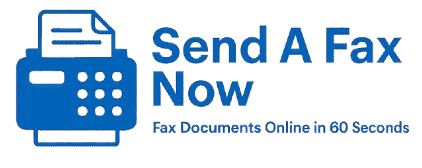Online Faxing vs. Email: Which Is More Secure?
When you need to send a sensitive document—like a medical record, legal form, or financial statement—you might wonder: should I email it, or fax it online? While email feels fast and familiar, it’s not always the most secure choice.
In this article, we’ll break down the security differences between online faxing and email, and help you decide which method is best for protecting your information in 2025.
Why Security Matters
Documents with personal information—like your Social Security number, health records, or banking details—can’t be treated casually. If they fall into the wrong hands, the result can be identity theft, legal issues, or financial loss.
That’s why understanding how your information moves from point A to point B is so important. Not all delivery methods are equally safe.
Email: Fast But Risky
Email is convenient, but it wasn’t built for security. When you send a file by email, it may pass through multiple servers and could be stored (unencrypted) on devices you don’t control—especially if the recipient doesn’t use a secure email provider.
Top Risks of Email:
- Messages can be intercepted during transmission
- Inboxes can be hacked or accessed without permission
- Files may be stored on devices or cloud servers without encryption
- Phishing and spoofing attacks are common
In short, sending sensitive files through email is like mailing a letter without an envelope—it might get there, but others could read it along the way.
Online Faxing: Encrypted and Direct
Online faxing uses a more controlled process. When you fax through a trusted service like SendAFaxNow.com, your document is encrypted during upload, converted to a fax signal, and delivered directly to a secure fax line.
This reduces the number of steps and servers involved. It also eliminates the risk of your file sitting in someone’s inbox for days, exposed to cyber threats.
Key Security Features of Online Faxing:
- End-to-end encryption during upload and transmission
- No cloud storage—files are deleted after faxing
- Delivered directly to a fax number (not an inbox)
- Confirmation receipt shows when and where the fax was delivered
Compliance with Privacy Laws
HIPAA, GDPR, and other data privacy laws require that personal information is handled securely. Faxing—especially online faxing—meets many of these standards because it creates a clear trail and avoids long-term digital storage.
Email, by contrast, often lacks the protections needed for regulated industries like healthcare, law, or finance—unless you’re using advanced secure email systems (which most people aren’t).
What About Traditional Fax Machines?
Old-school fax machines are secure in some ways, but they come with their own risks. Papers can be left in trays or picked up by the wrong person. Plus, they rely on phone lines, which can be slow or unreliable.
Online faxing gives you the best of both worlds: the security of a direct fax line, and the convenience of modern technology.
Speed, Proof, and Peace of Mind
When you send a fax with SendAFaxNow.com, you get an instant email confirmation showing the date, time, and destination. That proof matters if you’re dealing with a deadline, dispute, or official request.
Email, on the other hand, gives no guarantee. A message might be marked as spam, lost, or delayed—and you won’t always know if it was received or read.
Conclusion: Online Faxing Is the Safer Choice
If you’re sending something private, confidential, or legally important, online faxing is the more secure option. It’s encrypted, direct, and doesn’t leave a lingering digital footprint.
Need to send something sensitive today? Go to SendAFaxNow.com and fax it safely from any device—no account, no hassle, and no inbox risks.
